Repairing Damage to a Modern-era Lionel Steam Locomotive
Improper Storage Leads to Problems
With Lionel Santa Fe Hudson Steam Locomotive
When I was getting the holiday layout up and running, I decided to get out my modern-era Lionel 4-6-4 Hudson steam locomotive to run with a string of K-Line Santa Fe map reefers that I’ve been collecting over the past year or so.
I picked up the 1999-built Hudson a few years ago on an online auction site at a price too good to pass up, but, other than testing all the functions, since our O Gauge Project Railroad wasn’t finished, I had never really run it. It had been stored in the same temperature- and humidity-controlled layout room in the closet with all my other rolling stock and structures.
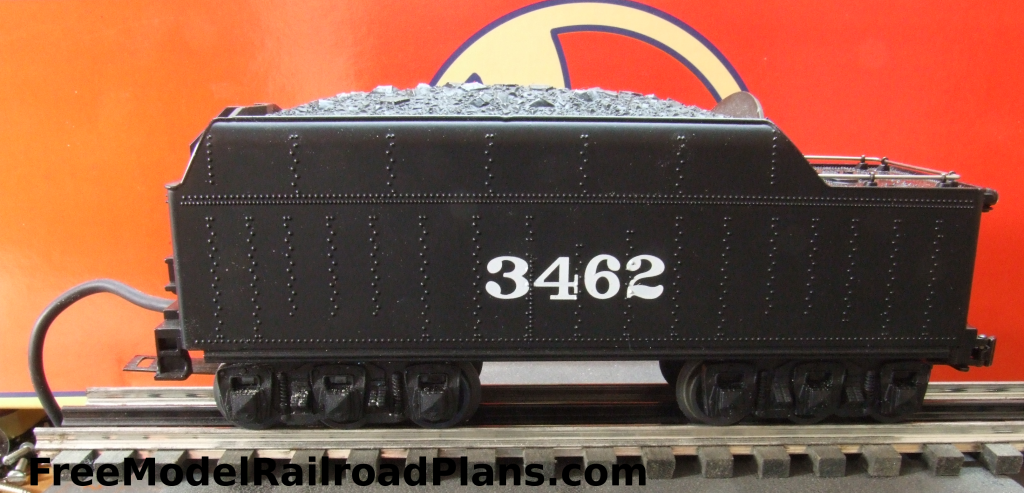
So, excited to have a place to run it, I unpacked it and prepared to lubricate it before use. After oiling all the points on the locomotive indicated in the manual, I turned to the tender (see Figure 1). That’s when I noticed some white dust on the forward truck (see Figure 1a).
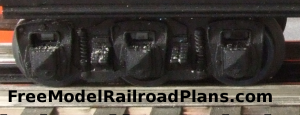
I assumed it was from the polystyrene insert that the train was stored in, so I got out a camel hair brush to dust it off. I tipped the tender on its side, and that’s when I saw I was dealing with much more than dust. There was a great deal of corrosion on the end of two brass rivets on the tender floor, and the paint in that area was completely gone (see Figure 2).
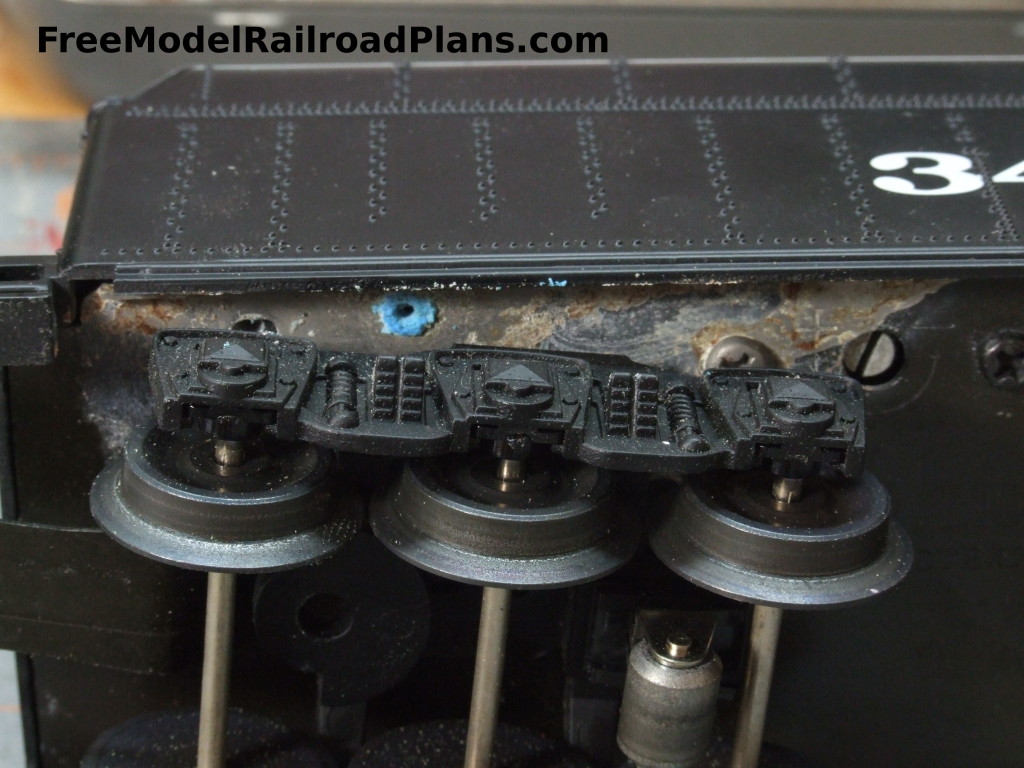
At a loss to figure out what had caused the corrosion, I decided to disassemble the tender to see if the damage was inside as well as outside. The tender shell is held to the frame with Phillips-head screws at each corner (see Figure 3), so I carefully removed those and lifted off the tender shell.
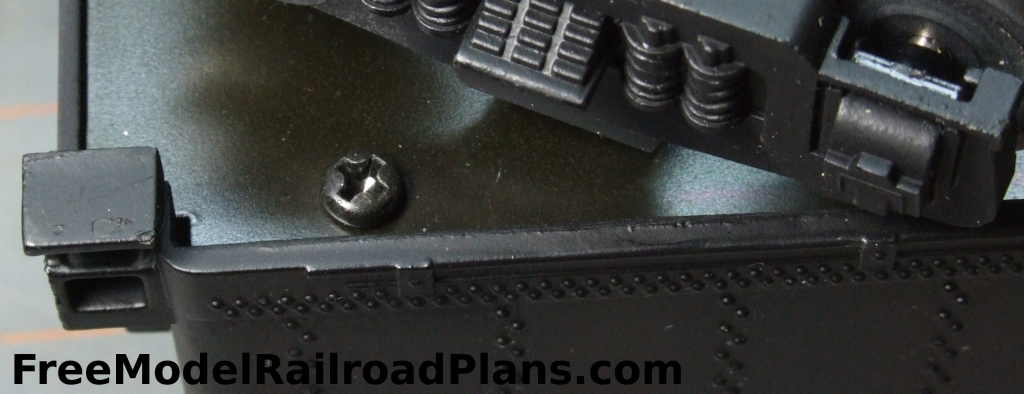
And I found the source of the problem: The previous owner had installed an alkaline battery which had leaked (see Figure 4). Now, I had never thought to look for a battery when I got the locomotive, because it was only outfitted with Lionel’s SignalSounds system, and the battery was only needed for the shutdown sounds available with Lionel’s more extensive RailSounds system. Consider this a lesson learned: always check modern locomotives for batteries before long term storage.
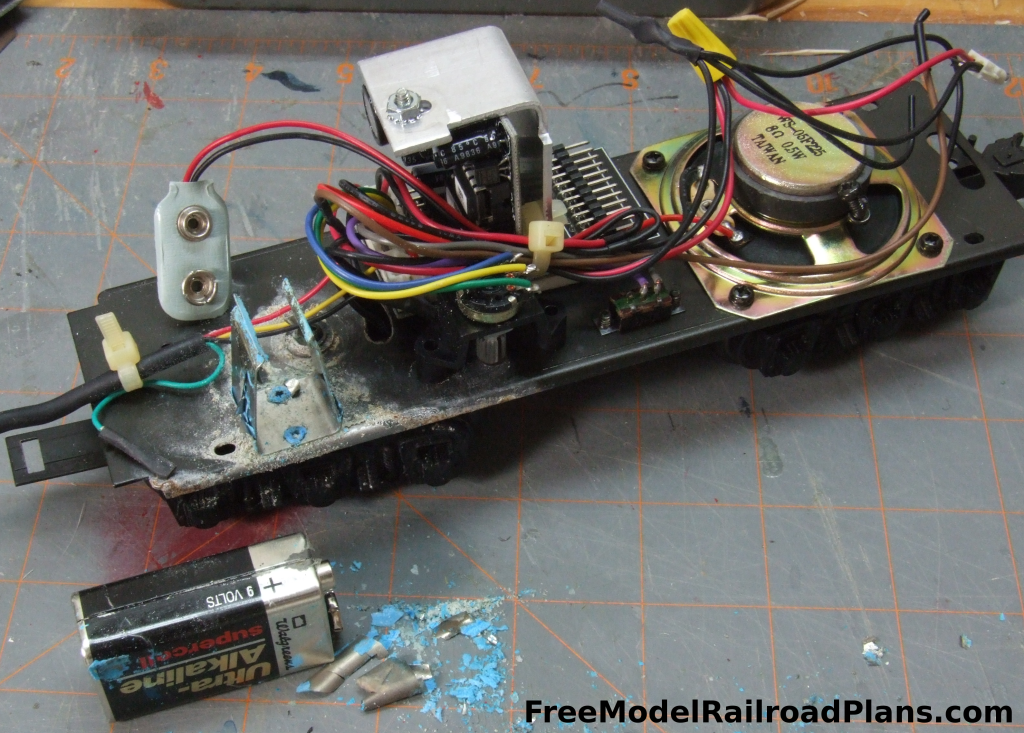
So, now I have a new project to deal with. I can’t just leave it, as, even with the battery removed, the corrosion will continue to damage the tender. But how to approach the repair? I could take it to a restoration expert, but the 1999-built Lionel Hudsons and 4-6-2 Pacifics regularly sell online for $100 – $150 in near-mint condition; I picked this one up off-season for less than that. So these locomotives are nice layout runners, but not collectors’ items, and the cost of professional restoration job would quickly surpass the value of it. I suppose I could get it professionally restored in the hopes that its value would one day increase, but then I probably wouldn’t want to run it, as the wear of running it would work against any increase in value.
And, quite frankly, I think the days of Lionel trains becoming collectors’ items are over, for several reasons:
- The Baby Boomers who created the market, and drove it for the past several decades, are getting far enough into retirement that most can no longer afford collecting high-priced vintage toys as they could during their wage-earning years.
- Fewer Generation X and Millennial children grew up with train sets, so will be less likely to want to collect them as adults, as they instead opt for the toys they valued in their youth. I remember as a boy riding my bike to the nearest railroad crossing during the summer just to watch the trains go by. But now trains in general – toy or prototype – simply do not hold the same fascination for children growing up in a world where they seem an anachronism to a modern world of digital entertainment.
- The oldest of those Baby Boomer collectors have started to pass away, and more and more of their collections are coming into the market, which is depressing prices for even some of the rarest items.
- The modern reincarnation of Lionel, and its red-headed step-child MTH, are producing products specifically as collectors’ items, rather than as toys to be played with, broken, and discarded. This ensures many modern-era toy train items go straight into the collectors’ closets, so the rarity that allowed for the price appreciation of Postwar Lionel trains will not be recreated.
- The manufacturers are also over-producing these products so the collecting market cannot absorb them all. Hobby shops have to dump these excess items at cost or even a loss to free up capital for the next year’s offerings. Between this and the constant failure of hometown hobby shops as more and more people buy on-line, a constant supply of products is created for the secondary auction markets. As an example, I regularly pick up Lionel’s 6464 three-car reissue sets for $30 or less from secondary sellers when the original new price in hobby shops was more than $100. These are not technically “new,” but they have never seen the rails and are often still in shrink wrap.
So, that is my long-winded rational for a home-restoration that will cost me little more than my time, and yet keep this locomotive healthy long enough for my grandchildren to enjoy it.
However, I cannot stress strongly enough DO NOT FOLLOW THIS PROCEDURE WITH A VALUABLE COLLECTIBLE! Repair work on valuable items should always be done by someone certified by the manufacturer. And even in that case, ask for references from previous customers.
With that warning given, On the next page we’ll begin repairing our modern-era Lionel Hudson.